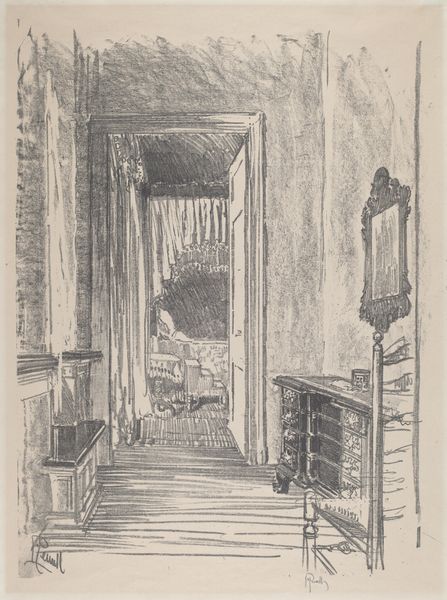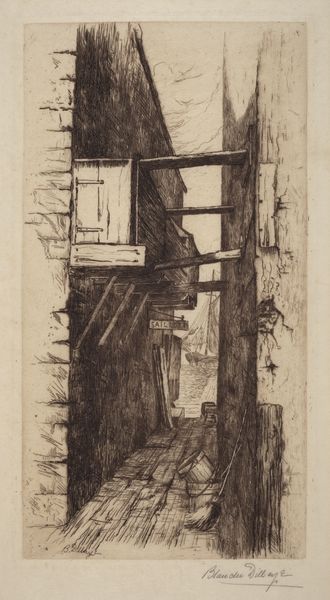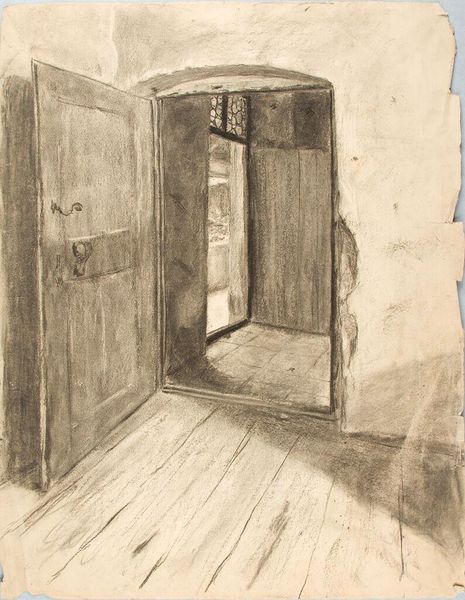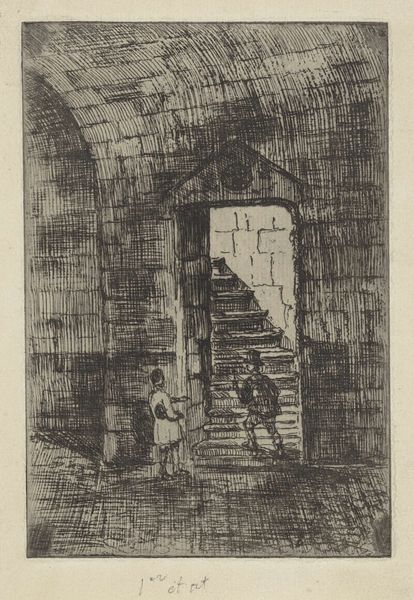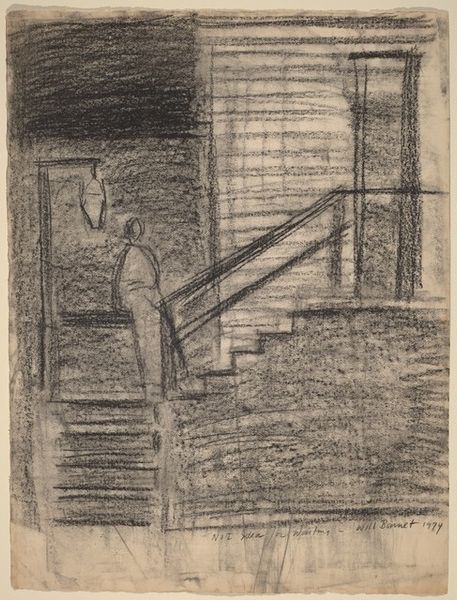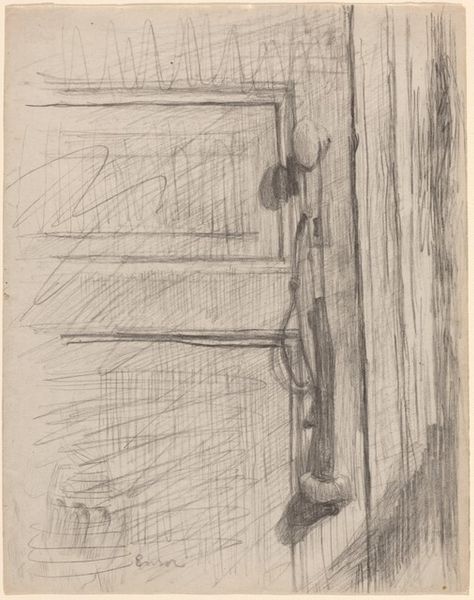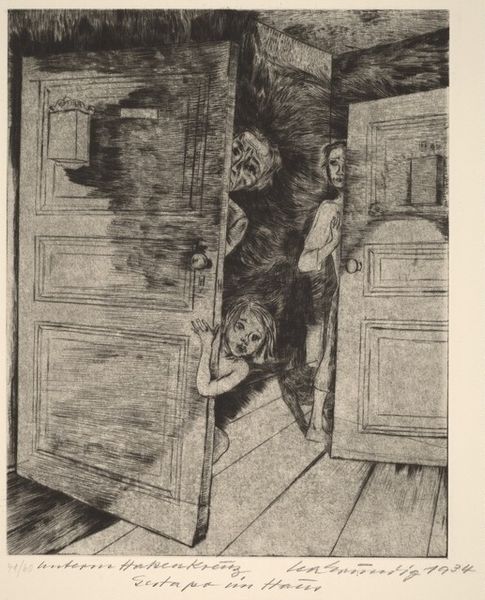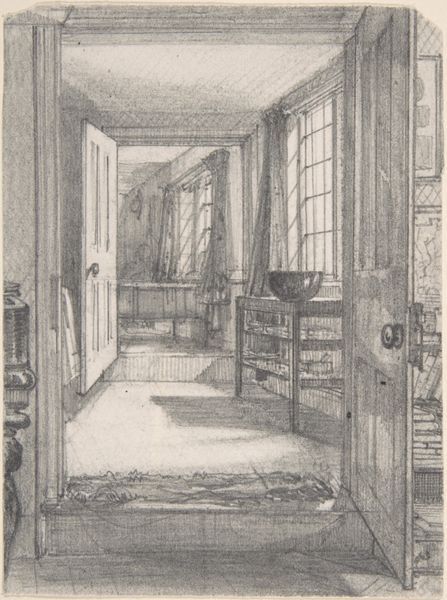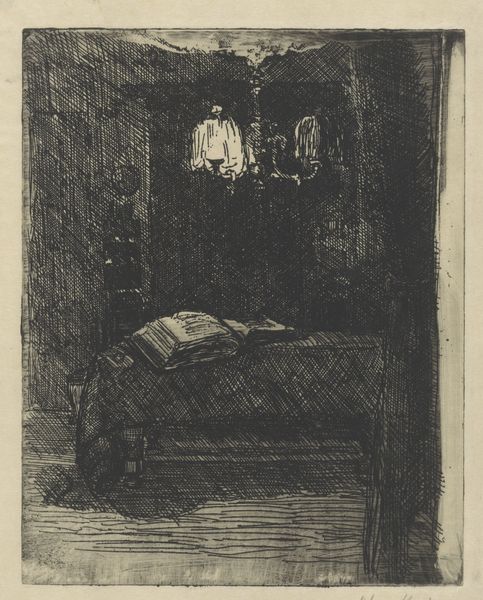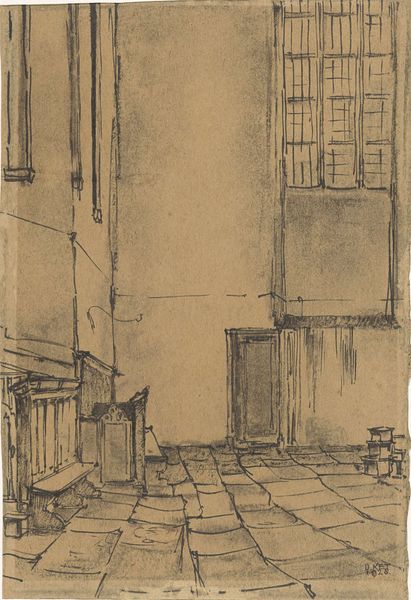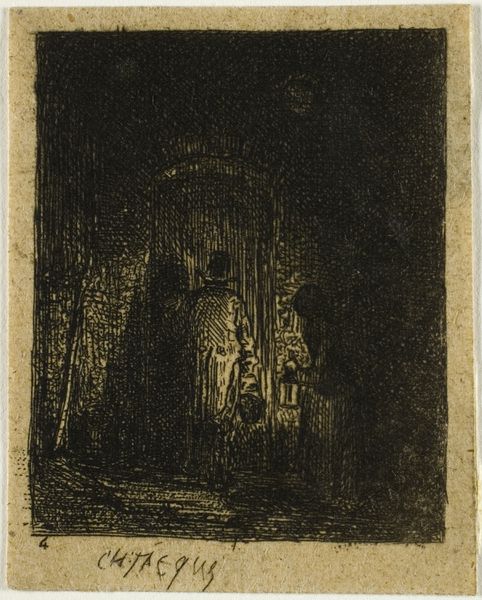
drawing, print, etching, intaglio, ink
#
drawing
# print
#
etching
#
intaglio
#
landscape
#
form
#
ink
#
genre-painting
#
realism
Dimensions: height 64 mm, width 42 mm
Copyright: Rijks Museum: Open Domain
Curator: Here we have "Openstaande deur," or "Open Door," an etching and drypoint created by Willem Steelink II, sometime between 1866 and 1928. Editor: It has this lovely, almost unsettling darkness. The stark lines and shadows really create a sense of depth, leading the eye into… somewhere uncertain. It almost feels claustrophobic. Curator: I think you've touched on something key. Consider the context of genre painting during that era; these intimate scenes often served as moral commentaries, revealing aspects of domestic life and perhaps even social anxieties about privacy. The open door – is it an invitation or a warning? Editor: Or maybe a practical concern about ventilation! Jokes aside, I'm really drawn to the mark-making here. You can almost feel the pressure of the etching needle creating these tiny, dense lines. The labor intensiveness must have been significant to get that tonal range. The cross-hatching technique is fascinating in itself; so physical, so deliberate. Curator: Absolutely, and that laborious process echoes the labor likely taking place within such a space – a home, a workshop perhaps. These interior scenes were, in their own way, a reflection of a changing society, the rise of the middle class and their domestic spaces. Editor: And the class implications are also in the materiality of this print; etching allowed for a democratisation of art consumption via relatively cheap multiples that were distributed into domestic contexts like we see here. An entirely new class of buyers and an explosion of printing technologies completely transformed the business of image production and image culture in a profound way. Curator: The scale too plays an important part; intimacy is key in this image, like a whispered confidence, as it provides a space of privacy to view and scrutinise. Editor: Looking closely reminds me that art making involves this kind of labour: intimate decisions based on how we construct our own social realities using particular material skills and technologies available to us. Curator: A thought-provoking perspective indeed. This print reveals how seemingly simple imagery can resonate with complex social narratives, both past and present. Editor: Ultimately, the beauty is not only the finished art, but the fascinating dialogue with society it manifests from raw materials to production and eventual interpretation.
Comments
No comments
Be the first to comment and join the conversation on the ultimate creative platform.
